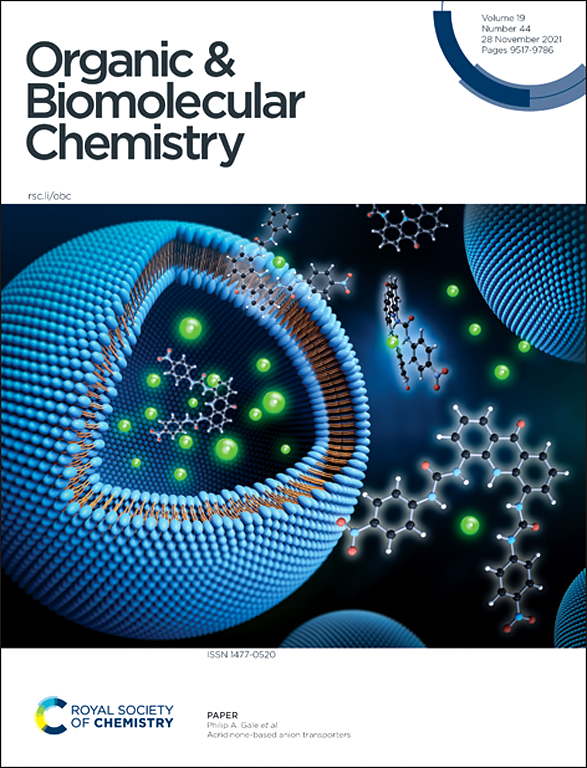Direct C–H functionalisation of azoles via Minisci reactions
IF 2.7
3区 化学
Q1 CHEMISTRY, ORGANIC
引用次数: 0
Abstract
Azoles have widespread applications in medicinal chemistry; for example, thiazoles, imidazoles, benzimidazoles, isoxazoles, tetrazoles and triazoles appear in the top 25 most frequently used N-heterocycles in FDA-approved drugs. Efficient routes for the late-stage C–H functionalisation of azole cores would therefore be highly desirable. The Minisci reaction, a nucleophilic radical addition reaction onto N-heterocyclic bases, is a direct C–H functionalisation reaction that has the potential to be a powerful method for C–H functionalisations of azole scaffolds. However, azoles have not been as widely studied as substrates for modern Minisci-type reactions as they are often more electron-rich and thus more challenging substrates compared to electron-poor 6-membered N-heterocycles such as quinolines, pyrazines and pyridines typically used in Minisci reactions. Nevertheless, with the prevalence of azole scaffolds in drug design, the Minisci reaction has the potential to be a transformative tool for late-stage C–H functionalisations to efficiently access decorated azole motifs. This review thus aims to give an overview of the C–H functionalisation of azoles via Minisci-type reactions, highlighting recent progress, existing limitations and potential areas for growth.

通过 Minisci 反应实现唑的直接 C-H 功能化。
唑类化合物在药物化学中有着广泛的应用;例如,噻唑、咪唑、苯并咪唑、异噁唑、四氮唑和三唑是美国 FDA 批准药物中最常用的前 25 种 N-杂环化合物。因此,对唑类核心进行后期 C-H 功能化的有效途径是非常可取的。Minisci 反应是 N-杂环基上的亲核自由基加成反应,是一种直接的 C-H 功能化反应,有可能成为唑类支架 C-H 功能化的有力方法。然而,唑类化合物作为现代 Minisci 反应的底物尚未得到广泛研究,因为与 Minisci 反应通常使用的喹啉类、吡嗪类和吡啶类等贫电子 6 元 N-杂环化合物相比,唑类化合物通常电子含量更高,因此更具挑战性。尽管如此,由于药物设计中普遍使用唑类支架,Minisci 反应有可能成为后期 C-H 功能化的变革性工具,从而有效地获得装饰的唑类基团。因此,本综述旨在概述通过 Minisci 型反应对唑进行 C-H 功能化的情况,重点介绍最新进展、现有限制和潜在发展领域。
本文章由计算机程序翻译,如有差异,请以英文原文为准。
求助全文
约1分钟内获得全文
求助全文
来源期刊

Organic & Biomolecular Chemistry
化学-有机化学
CiteScore
5.50
自引率
9.40%
发文量
1056
审稿时长
1.3 months
期刊介绍:
Organic & Biomolecular Chemistry is an international journal using integrated research in chemistry-organic chemistry. Founded in 2003 by the Royal Society of Chemistry, the journal is published in Semimonthly issues and has been indexed by SCIE, a leading international database. The journal focuses on the key research and cutting-edge progress in the field of chemistry-organic chemistry, publishes and reports the research results in this field in a timely manner, and is committed to becoming a window and platform for rapid academic exchanges among peers in this field. The journal's impact factor in 2023 is 2.9, and its CiteScore is 5.5.
 求助内容:
求助内容: 应助结果提醒方式:
应助结果提醒方式:


